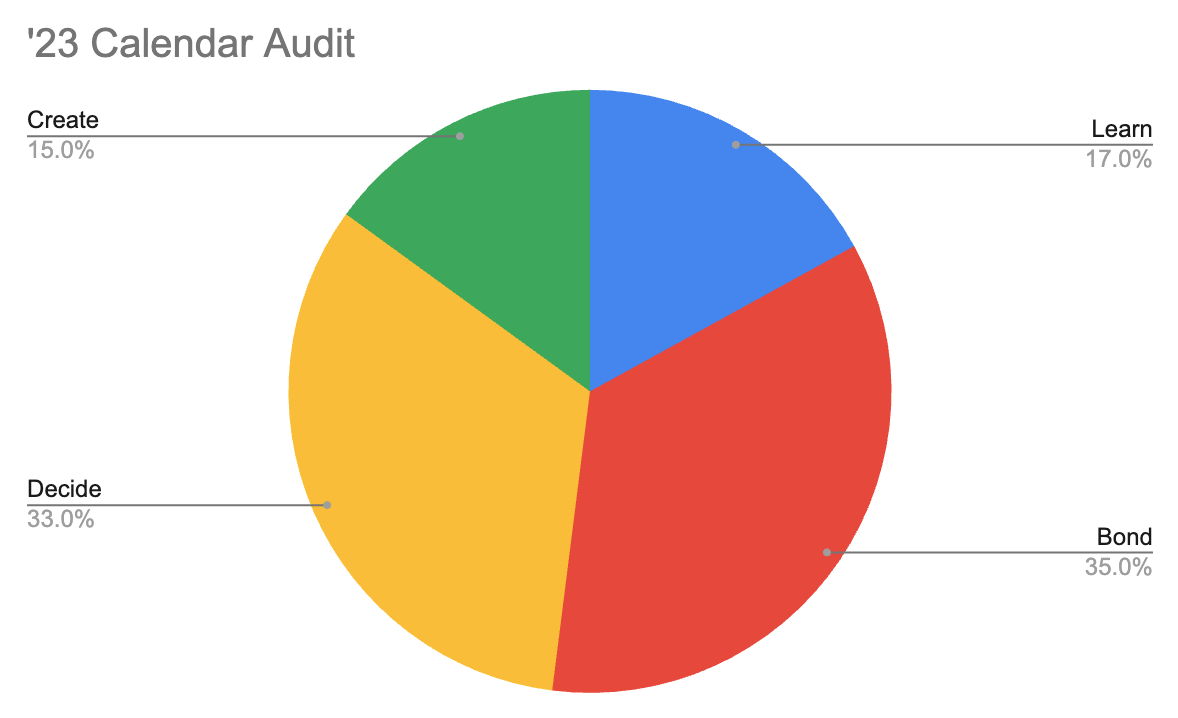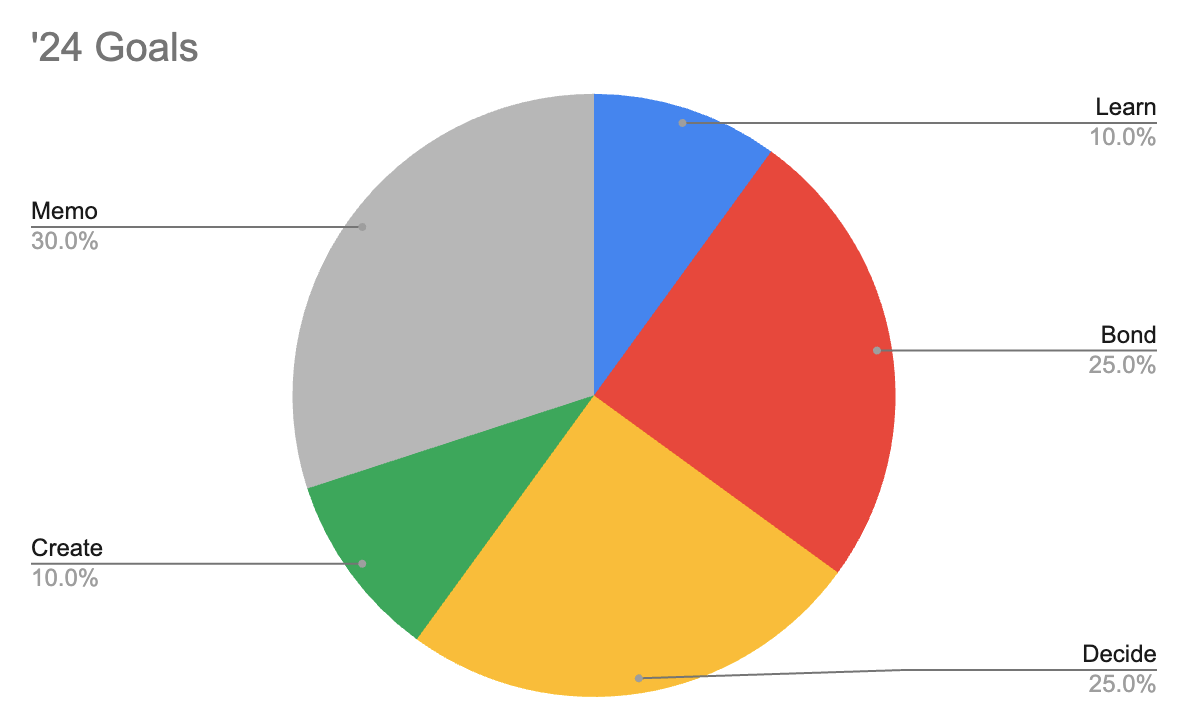Where did I spend my time in 2023 ⏳
A post where I talk about spending less time talking and more time doing by doing this blog post I'm talking about.
Reflection
Looking back on the past year, one thing stands out: I spent way too much time in meetings. That’s not necessarily a bad thing—meetings can be important—but they often pull you away from what you should be doing instead.
As I wrestled with this conflict, two thoughts kept coming to mind. The first is this (loosely) paraphrased one:
“The day people stop bringing you their problems is the day they’ve either lost confidence you can help, or they’ve decided you don’t care. Both are failures.”
This stuck with me because it gets to the heart of being a good teammate. When people stop coming to you with problems, it’s not just a quiet week—it’s a signal that something’s broken. Either they don’t trust you to help, or they don’t think you care. And both are signs of a rotting culture. A rotten tree trunk appears strong until the storm breaks it in two. If you want to build something meaningful, with people or products, you have to create an environment where people feel comfortable raising their hand. Problems unsurfaced are problems unsolved.
The second is from Woody Allen:
“Eighty percent of success is showing up.”
It’s simple, but it says a lot about being present and consistent. Successful teams aren’t built by singular moments of passion; it’s built by those who show up, over and over again. This is even more true in small teams. Being present—not just physically, but mentally—can be the difference between good and great.
So, you want to be fully available to your team, but to do that, you have to show up for yourself first. That means carving out the time and space to build the systems, tools, and perspective needed to drive your own responsibilities effectively. It can seem selfish, but it’s necessary. Building culture isn’t about choosing between the team and yourself. It’s about making sure both can thrive in parallel.
Action
Last year, I became a little obsessed with finding frameworks to strike a better balance. The goal wasn’t to just say “no” to more meetings. That’s easy—and honestly, misses the point. What I’m challenging myself to do is show up with more intentionality. It’s not about cutting back; it’s about choosing the meetings where I can be present, engaged, and impactful.
The approach I stuck with this year came from Adam Grant. It’s a simple but powerful exercise: every meeting gets tagged with one of four purposes — Bond, Create, Learn, or Decide.
When I ran this framework against my meetings from the last year, the results were honestly surprising. It showed me where I was spending my time and, more importantly, where I wasn’t. But with that clarity, I can make better choices and focus on improving how I show up in 2024.

Here’s what stood out:
Bond
No surprise here - the bulk of my time last year was spent in the Bond category. Building genuine relationships takes time, but I believe it is the foundation of any successful team. But as much as I value relationships, I’ve realized that relying on them alone isn’t sustainable, especially as teams grow. For instance, when we had three other product managers on our team this was fine. We’ve grown more than 5x though. To scale, I need to focus more on rapport and reach in other ways, particularly when working across teams with different priorities or standards.
Adjustment: Fewer 1:1s, more publicly written and distributed artifacts.
Decide
Decide came in second, which also tracks. Being clear and decisive is critical, but so is being flexible. Some decisions are best made through meetings, but as a global team, those meetings often land square in the middle of productive hours. That’s a tradeoff we need to be comfortable making based on the working styles of different teams.
Adjustment: Prioritize decision-oriented meetings, but look to replace them with decisions docs wherever possible.
Learn
I spent a decent chunk of time in Learn which I love. Staying curious and learning from the field is what enables us to make better decisions and build better products. And that’s a two-way street. I need to be more proactive in sharing what I learn myself or from these meetings to amplify the takeaways for a broader audience enabling others to make better decisions too.
Adjustment: Increase the time spent learning, especially from customer insights. But with an added focus on documenting and amplifying those learnings across the team.
Create
Unsurprisingly, Create was the smallest category. I’m not a builder. I’m just here to help enable others to create. While I love being close to the technical work, I’ve learned that my best contribution is providing the support the team needs to build great products.
Adjustment: Decrease time in Create meetings and focus more on building assembly lines that support the builders around me.
I think using this framework gave me a valuable lens to view how I spent my time last year and how I can improve next year.
Resolution

With all this in mind, I’ve made a simple commitment to myself: be more intentional about the meetings I choose to attend. Meetings aren’t inherently good or bad—they’re what you make of them. Some are productive, others are a waste. My goal is just to set a higher quality bar, define what I want out of them, and use these filters to hold myself to audit. Until next year, consider this audit wrapped.